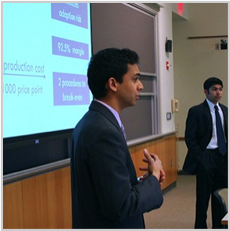CURRENT PROJECTS
PDF Download
Software
Epharmix

Epharmix has developed customized prescribable electronic interventions for a wide range of conditions (from dialysis compliance to sickle cell treatment) and tests them at the same level of clinical validity as traditional pharmaceuticals. At the moment Epharmix has clinical trials testing over fifteen novel e-pharmaceuticals, with current preliminary data suggesting improvement in time to treatment and clinical outcomes. In addition, Epharmix interventions are designed to be reimbursable by medicare, produce cost savings from reduced negative outcomes such as hospital readmissions, and help healthcare organizations reach meaningful use requirements.
Project Leader: Blake Marggraff (bmarggraff@gmail.com)
Team members: Avik Som, Tonya An, Joe McDonald
Healthcare Unlocked

Healthcare Unlocked was developed to meet market needs by providing access to previous healthcare providers’ information and allowing for communication amongst Electronic Health Record (EHRs) systems. Electronic Health Records (EHRs) are a digital version of a paper chart with medical and treatment patient histories. Healthcare Unlocked provides patients with a mobile application which will log the details of the current visit while simultaneously loading previous physician contact information for all locations in which the app was used. Healthcare providers can then easily send an automated request for a patient’s past medical records using our software. Healthcare Unlocked allows healthcare providers to reduce administrative time when retrieving third party medical records and gives physicians an enhanced ability to make informed decisions and better coordinated patient care.
Project Leader: William Papper (wpapper@wustl.edu)
Team members: Sirish Veligati, Shelina Ramnarine, Nikhil Chandra
Rhythmic Health
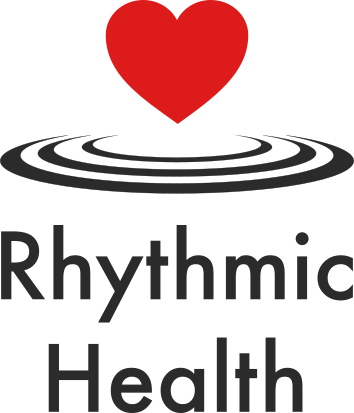
Rhythmic Health has developed a multi-platform system, PulseWatch, to explore the new avenue of health monitoring using wearable technologies. PulseWatch gathers pertinent data from sensors in wearable devices such as the Apple Watch, analyzes for detectable cardiac arrhythmias such as atrial fibrillation, and establishes and maintains a channel of communication between the user and their healthcare provider. By leveraging current wearable technologies with continuous monitoring capabilities, PulseWatch could help providers detect atrial fibrillation months or years before they could otherwise be detected. This empowers users to take their health into their own hands and helps inform healthcare providers of the oftentimes-transient symptoms the users may experience. Rhythmic Health has a long-term goal of facilitating healthcare using wearable technologies. By integrating health monitoring and communication, we can make wearable technologies clinically useful.
Project Leader: Chuner Guo (guoch@wusm.wustl.edu)
Team members: Sean Boone, Adela Gao, Kavon Javaherian, Nana Owusu, James Wall, Zhuchen Xu
Interactive Medical Questionnaire System - IMQuest

As hospitals transition to electronic health record (EHR) systems, patients are still spending time in waiting rooms filling out paper questionnaires that require manual entry. We are developing an interactive medical questionnaire system, IMQuest, to optimize patient-doctor communication. IMQuest uses a patient-friendly user interface that minimizes typing, defines medical terms, and provides opportunities to mark questions for the doctor. The input is transferred to secure storage and instantly translated to a customizable summary for the physician. IMQuest is HIPAA compliant and programmed using "future-safe" infrastructure that integrates the questionnaire data with the patient's EHR. IMQuest improves the quality and efficiency of notoriously short visits to the doctor's office.
Project Leader:
Team members:
Eureka
Proper positioning of an initial patent can create long-term savings, both in legal fees and time. Eureka aims to aid universities, corporations, and start-ups in elucidating the path to searching for/filing a patent as well as staying ahead with technologies. Eureka has developed a new graphical and intuitive representation of previous and existing patent literature such that,users can simply enter the desired search terms into Eureka’s search bar and all related and existing patents will be displayed such that one can navigate the patent landscape easier than ever before. Through a better representation of the existing landscape, users can not only see what exists but also the gaps in technology through patent language, providing a quicker path to refining a given product or process.
Project Leader: Manu Stephen (manu.stephen@gmail.com)
Team members: Teja Vallapuri, CT Hwang, Maureen Connelly, Justin Lipner
Diversity Demystified

Diversity Demystified has reinvented perceptions of diversity and diversity training by creating a diversity immersion tool to meet the current deficit in interpersonal communication and community citizenship. We define diversity as the engagement of individuals who embody an array of identity markers. We believe that effective interpersonal communication necessitates an exploration of preconceived notions of various identity markers in all aspects of daily life. In professional settings, this exploration is not routine and takes place in the form of diversity training limited to particular spaces and times, stifling immersion and true transformation for staff. Through Diversity Demystified, users have access to virtual immersions, which provide an exploration of various identity markers and statuses through a mobile application or via a website. Diversity Demystified enables participants to digest complex concepts at their own convenience. The mission of Diversity Demystified is to illuminate perspectives to enable transformations creating environments where all are accepted, understood, and included.
Project Leader:
Team members:
Devices
Gene-oscopy

Gene-oscopy is developing a next generation colorectal cancer screening method that evaluates the mRNA in stool samples, getting rid of the need for colonoscopy in healthy patients. Patients provide a fecal sample to the doctor, the mRNA in the stool is extracted, and the expression profile of this sample determines if the patient requires further care. Geneoscopy aims to reduce the cost of screening and improve patient compliance to reduce the number of preventable colorectal deaths in this country.
Project Leader: Erica Barnell (barnelle@wusm.wustl.edu)
Team members: Sein Pyo, Marianne Ligon, Manoj Arra, Connie Gan, Yiming Kang, Edward Poyo
Volt Optics: An Intelligent Pair of Multifocals

Modern glasses are clumsy. Single-prescription lenses are inadequate, and bifocals or varifocals have obscured, small fields of view. Many people carry only reading glasses around with them for shortsighted reading during a small percentage of the day. We are creating variable-prescription glasses that can quickly change prescriptions with just the touch of a button.
Project Leader: Gregg Willcox (gwillcox@wustl.edu)
Team members: Tony Li, Peter Rand, Nicholas Gaudio
Squarefruit

Squarefruit Labs is aiming to accelerate the next manufacturing race with Persona. Persona is a unique robot equipped with a 7 degree-of-freedom arm and several multilevel camera systems for real world interactions that involve advanced manufacturing techniques including 3d printing, scanning, milling, and material handling. What used to take full factories and multiple levels of prototyping we will be able to do with Persona on a single streamlined platform. We are testing Persona’s capability in the fields of advanced manufacturing, agriculture, renewable energy, and biomedical engineering. Biomedical applications have been expanded to include full sized prosthetics as well as preliminary testing with tissue printing.
Project Leader: Chico Weber (chico.weber@squarefruitenergy.com)
Team members: BK Bolisetty
Cura Design House: Compression Stockings

Venous Pooling is related to various diseases such as DVT, Orthostatic Hypotension and Varicose. Wearing compression stockings can help prevent those conditions, but due to the difficulty of use, a lot of patients suffer pain while trying to apply compression stockings or completely give up on compression stockings, simply because they’re hard to put on (mainly due to the high amount of tension on the stockings). It is a prevalent problem among the elderly, young women, airline business travelers, and athletes. CDH has designed compression stockings that are as easy to put on as regular socks, but tighten appropriately at the push of a button.
Project Leader: Brett (Teng) Gao (gaoteng@wustl.edu)
Team members: Avik Som, Stefanie Shahan, Kate Jung, Rishil Mehta, Kenny Kim, Tonya An
In vitro select
Unfortunately, over 3 million couples each year suffer from infertility caused by genetics, age, or lifestyle choices. In vitro fertilization (IVF) enables these couples to rear their own children by fertilizing the egg outside of the body. It is an expensive procedure and is inefficient. On average, it takes three cycles for a successful pregnancy, costing over $30,000. A large contributing factor is the DNA integrity of the sperm. In a normal adult, only 4% of a sperm sample is viable. Current methods to purify sperm for IVF don't account for many of these abnormalities and introduce DNA damage. Eggs that are fertilized with sperm with damaged DNA rarely survive after implantation in the uterus. We are developing a device that purifies sperm more safely, with higher specificity, and more naturally to increase the chance of a successful pregnancy with IVF. The IVF market is worth $3.3 billion, and we believe we can obtain up to $165 million of it.
Project Leader:
Team members:
Wheelchair Transportation
1.5 million people use manual wheelchairs in the United States. Unfortunately, most vehicles are not designed for wheelchair interfacing. Instead of modifying vehicles, most manual wheelchair users choose to transfer from their wheelchair into an un-modified vehicle. These repetitive transfers put wheelchair users and caregivers at risk of injury. Over 70% of manual wheelchair users experience overuse injuries that limit their independence. In addition causing injury, storing wheelchairs inside vehicles is time consuming and space intensive. We are designing a device to automatically store and un-store manual wheelchairs above or behind vehicles. This minimizes risk of injury and facilitates quick and space-efficient wheelchair storage. Our device interfaces with most manual wheelchairs and securely attaches to vehicles without requiring structural modifications. It also weighs less than 90 pounds and operates in less than 2 minutes.
Project Leader: Charlotte Guertler (charlotte.guertler@wustl.edu)
Team members: Sam Nadell, Alaric D'Souza, Rachel Milgrom, Yu Xiao
A Better way to view Bedside Cystoscopy
Current bedside cystoscopy depends on a scope that must be looked through directly by the operator. This makes it uncomfortable to navigate, impossible for other physicians to see the image, and does not allow sharing of the images for later review or patient education. Cystoscopes are already designed to connect to a wired camera in the OR. We are designing a wireless camera that will reconstruct and broadcast the image to a monitory to directly solve this issue.
Project Leader: Joseph Song (songjo@wudosis.wustl.edu)
Team members: Chiye Li, Mike Golman, Michael Glamore
MRI Head Stabilization
Head movements during MRI lead to unusable images and longer procedures. We are creating adjustable, reusable, padded head stabilizers that dramatically improve newborn MR image quality and reduce time.
Project Leader: Thomas Hong (t.hong@wustl.edu)
Team members: Nathan Shamtoub, Cheng Cheng, Rebecca Ansolabehere, Zezhong Wang
WORLD HEALTH ORGANIZATION TEAMS
Water Out Of Thin Air (WOOTA)
Problem: Lack of access to clean water and sanitation kills children at a rate equivalent to a jumbo jet crashing every four hours. 780 million people worldwide lack access to clean water. The problem is two-fold: not only is the drinking water in many developing countries not suitable for human consumption, it is also incredibly difficult to obtain. It can take up to three miles (walking each way) for a resident of a village to reach adequate drinking water. However, the magnitude of the problem extends beyond ascertaining adequate hydration; poor access is a root of many other issues, such as disease, dehydration, and malnutrition. While current solutions exist, they are often ineffective because they are expensive and impractical in undeveloped areas. One of the main problems is that existing solutions rely on the grid, which is unreliable or nonexistent in third world countries. Proposed Solution: We are aiming to fix this pressing problem with a solution that is able to condense moisture from the air, thus providing a clean source of water. Condensing water provides a sanitary alternative to current solutions since condensation is free of contaminants commonly found in groundwater.
Team members: Noronha, Anna; Zhu, Harold; Baechle, Kailin; Jones, Katelyn; Nikhil Patel; Katz, Sydney; Zachary Bluestein
Black Lung
Problem: Black Lung or Coal Worked Pneumoconiosis (CWP) is a widespread disease that is caused by long exposure to coal dust. 76,000 miners died from black lung between 1968 and 2010. This chronic disease causes a range of respiratory and cardiovascular complications. There is no cure for CWP and studies show that CWP can progress even after exposure has stopped. Therefore the only solution to eliminating CWP is through prevention. Proposed Solution: Our solution is to design a mask that addressed the comfort and accessibility of the dustproof masks. We would be using galvanized water that will work as the filter core of this mask. Galvanizing the water can trap light and/or charged particle better. Also concentrating the particles at the electrode can prevent saturation at most of the solution. The device uses an air blower to promote comfort of breathing. The excess air will come out through the oneway airway at the top. The device is to be put on the belt behind the wrist to maximize stability.
Team members: Galen Cheng, Benjamin Zhang, Jack Lin, Caroline Zhang, Hehaoyu Zou
Female Condom
Problem: Since 1981, an estimated 36 million people have died of HIV/AIDS. 1.6 million of those deaths occurred in 2012, along with 2.3 million more individuals becoming newly infected with the virus. Using a condom during sexual intercourse greatly reduces the risk of transmitting the virus. This becomes a problem in many third world countries, where many men are not expected to wear a condom and the women may have no say in the matter. If women attempt to wear a female condom, the men may force them to take it out. Proposed Solution: produce a female condom that is much more discreet than current models. Current models of the female condom hang outside of the body and tend to have multiple problems that include slipping out of place, not fitting correctly, and being generally unpleasant. A female condom that is less awkward and discreet enough that a man might not notice it could prevent many cases of HIV/AIDS being transmitted in third world countries.
Team members: Nick Froelich, Kara Larson, Loli Baquerizo
PAST ONGOING PROJECTS
Kinocom

The kinoCOM prototype has two ‘control rings’ that can be manipulated by the user to control a cursor. Each control ring contains an inertial measurement units (IMUs, or combined accelerometer-gyroscopes) that capture 6 degrees of freedom. The team created this HCI (human computer interface) device to help a stroke patient who is almost completely paralyzed and unable to speak. Kinocom won 1st Place at the IDEA Labs Midyear Design Review. Kinocom won a $2000 electronics kit to further improve the device from the MicroMedic Contest
Visit their websiteThe Mint Group

The Mint Group is taking a fresh approach to nasal endoscopy and is well poised to change the existing paradigm of ENT care. ENT physicians and administrators are frustrated with a lack of ergonomics in current designs and excessive initial and maintenance costs. Our solution is a medical imaging system comprised of an endoscope with disposable optics and wireless attachments that conforms to commodity standards. Our system will reduce the number of endoscopes and personnel a clinic must employ, reducing initial costs by 90% and operating costs by 25% . Our endoscope system will drastically improve ENT patient care at a significantly reduced administrative cost.
Data Dog
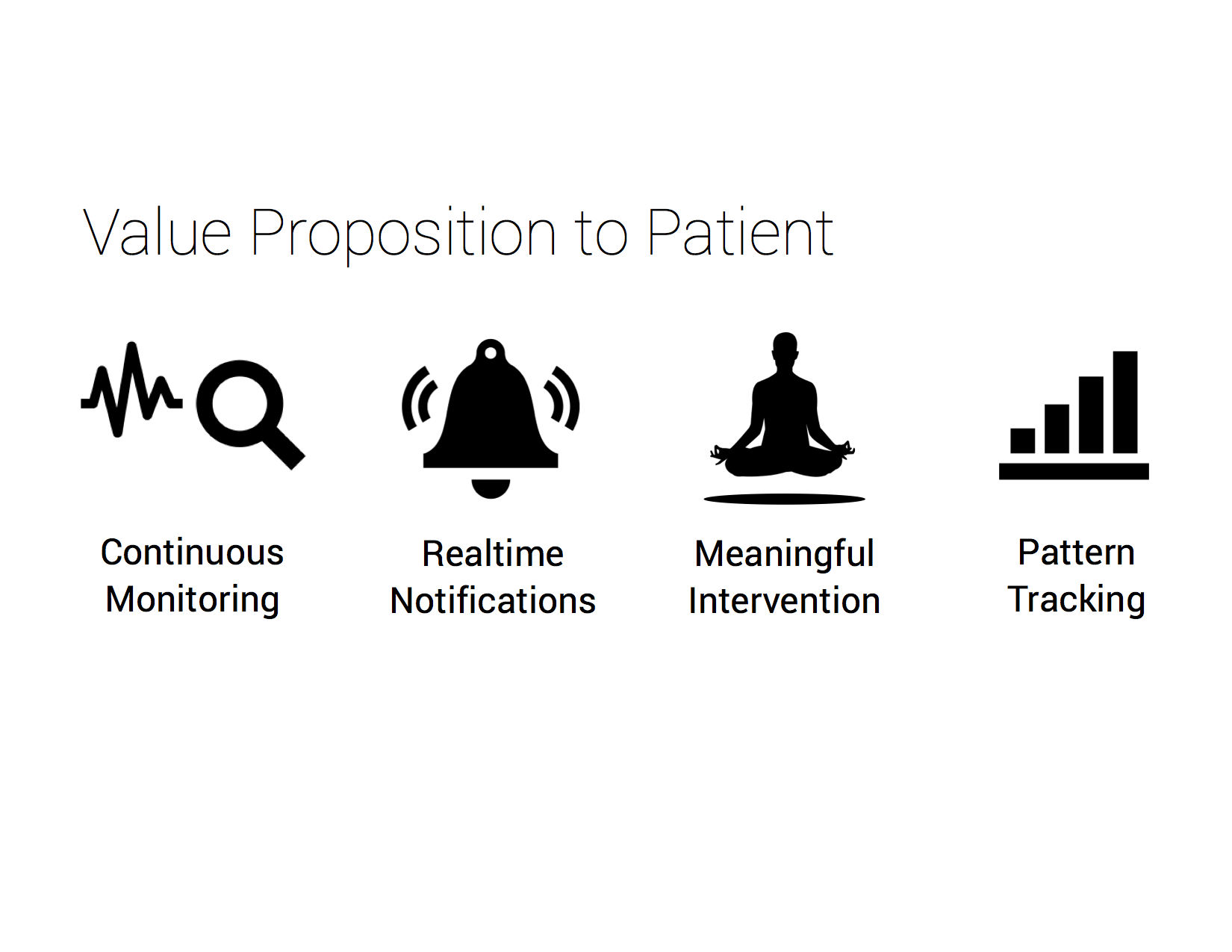
We are developing a system for enhancing therapy for stress and anxiety disorders through wearable technology. The DataDog companion app closes the care gap between sessions with the therapist. Patients engage with their therapy regimen in their daily lives by interacting with our therapy tools. Our system mitigates stress events by monitoring autonomic signals and prompting the patient to pursue coping techniques when they are experiencing stress. We ultimately aim to expand usage of mobile and wearable technology for mental health applications. Our app will undergo a pilot study this fall.
IdealTap
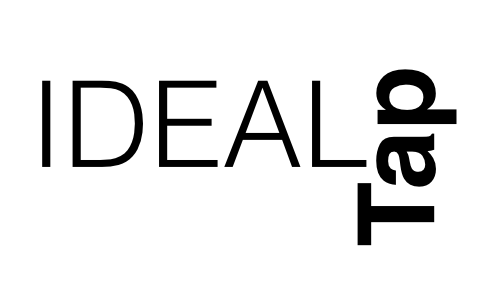
The IdealTap Lumbar Puncture Chair is a specialized chair that greatly improves the lumbar puncture procedure (also known as the spinal tap) by making it faster and easier for the physician, as well as safer and more comfortable for the patient. Lumbar punctures are performed all over the world by neurologists and in emergency rooms to diagnose diseases of the brain, spinal cord & their protective tissues. Spinal taps are done almost a million times per year across the US. And with rapidly advancing research into Alzheimer’s screening techniques (much of which is being done right here at Wash U) this procedure will likely be done way more often in the near future. Our device makes this long, painful procedure faster and easier by taking advantage of both of the two main positions that patients can assume during a lumbar puncture: seated upright, or laying on their side. The chair can safely and smoothly move the patient between these two positions at the push of a button which is controlled by the doctor. We have completed a proof-of-concept prototype and are now in the process of manufacturing a prototype that is safe to be used in the clinic.
Medicrate

Physicians who want to share their knowledge are often stymied by privacy restrictions or technical limitations. Noteworthy surgeries, painstakingly recorded rarely make if off the camera, let alone onto a platform where others can learn from the experience. Medicrate is a service that allows physicians to store and share files securely. Users upload videos and other documents - all of which are stored on your institution's private servers. Users can restrict access to yourself orshare the files with groups that you join or create. Medicrate also allows user to generate short quizzes based on your material making it an excellent tool to assess residents' and students' understanding of content. Medicrate gives users complete control over your information while preserving the highest standards of security and confidentiality
Visit their websiteEpi Squared - Wireless Implantable Devices
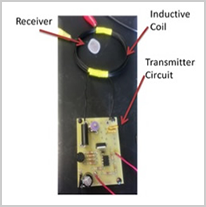
Another team tackled the problem of providing power to implantable devices (e.g. Pacemakers, to LVADs) non-invasively. They had a working prototype within 2 months, and a patent pending. They are now targetting their project towards recharging of implanted nerve stimulation devices used in epilepsy. The team were finalists in the Olin Cup business development competition
And Many More...
- Kinect-based rehabilitation to treat hemispatial neglect
- Method to measure intraoperative blood loss
- Device to measure jugular venous distention easily and more precisely
